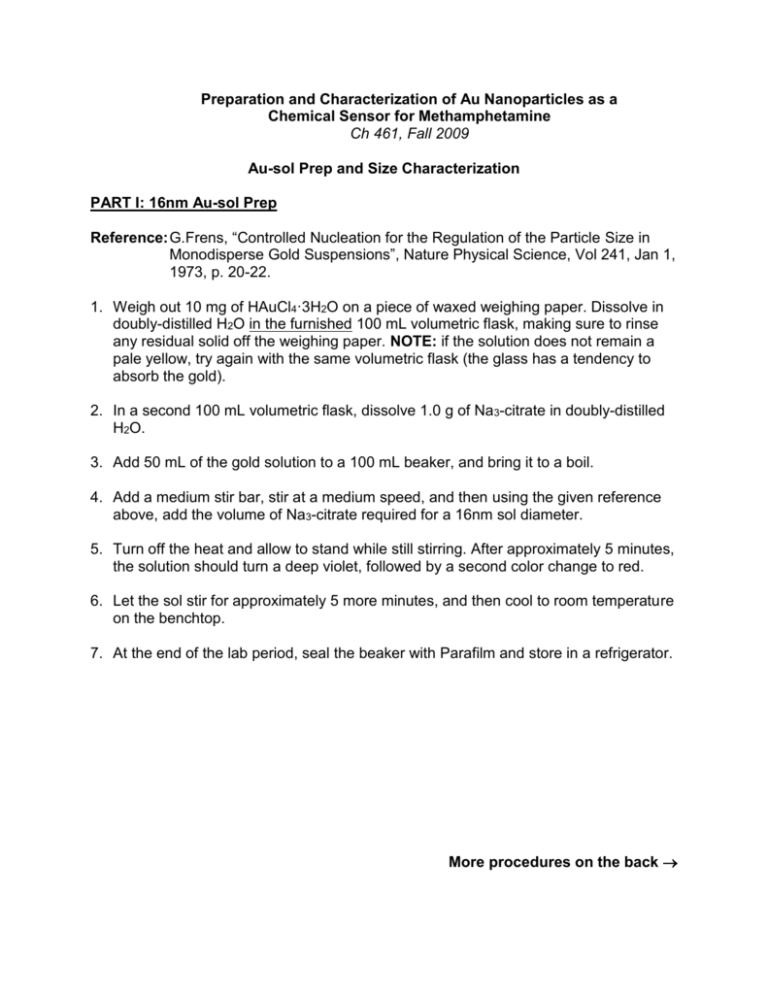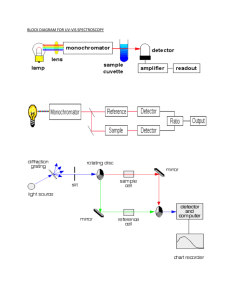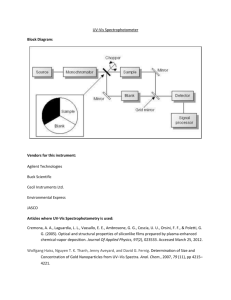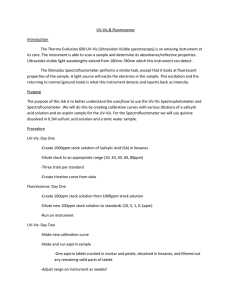Au-Nanoparticles-1st-Lab-Period
advertisement

Preparation and Characterization of Au Nanoparticles as a Chemical Sensor for Methamphetamine Ch 461, Fall 2009 Au-sol Prep and Size Characterization PART I: 16nm Au-sol Prep Reference: G.Frens, “Controlled Nucleation for the Regulation of the Particle Size in Monodisperse Gold Suspensions”, Nature Physical Science, Vol 241, Jan 1, 1973, p. 20-22. 1. Weigh out 10 mg of HAuCl4·3H2O on a piece of waxed weighing paper. Dissolve in doubly-distilled H2O in the furnished 100 mL volumetric flask, making sure to rinse any residual solid off the weighing paper. NOTE: if the solution does not remain a pale yellow, try again with the same volumetric flask (the glass has a tendency to absorb the gold). 2. In a second 100 mL volumetric flask, dissolve 1.0 g of Na3-citrate in doubly-distilled H2O. 3. Add 50 mL of the gold solution to a 100 mL beaker, and bring it to a boil. 4. Add a medium stir bar, stir at a medium speed, and then using the given reference above, add the volume of Na3-citrate required for a 16nm sol diameter. 5. Turn off the heat and allow to stand while still stirring. After approximately 5 minutes, the solution should turn a deep violet, followed by a second color change to red. 6. Let the sol stir for approximately 5 more minutes, and then cool to room temperature on the benchtop. 7. At the end of the lab period, seal the beaker with Parafilm and store in a refrigerator. More procedures on the back PART II: Size Characterization A. Obtaining Extinction (UV-Vis) Spectra of Au-sols 1. Using a Spec-20 and a quartz cuvette, manually obtain the UV-Vis spectrum of your Au-sols from 400-900nm. Obtain data every 20nm, which corresponds to a total of 25 points for your spectrum. 2. Enter the data manually into Microsoft Excel. Graph and print the spectrum, and save a digital copy of your Excel file. B. Using the Program MiePlot to Calculate Theoretical Extinction Spectra 1. Have the instructor show you how the program works! Write the procedure below. MiePlot Instructions: 2. Vary the size of the sol until the theoretical spectrum visually matches your UV-Vis spectrum. Save the theoretical fit as a text file. 3. Import the text file into the Microsoft Excel file containing your UV-Vis spectrum (from Part A, Step 2 above). Plot your UV-Vis spectrum and theoretical data together. Plot your data as individual points and the fit as a smooth line.











